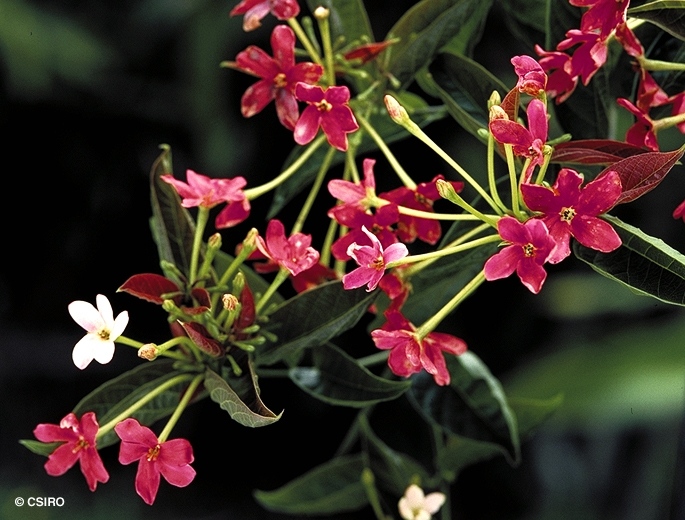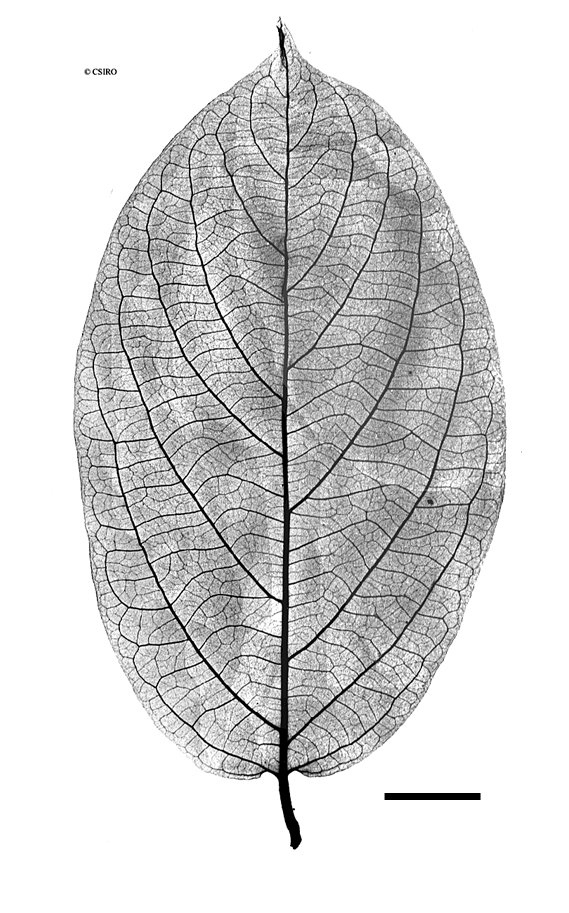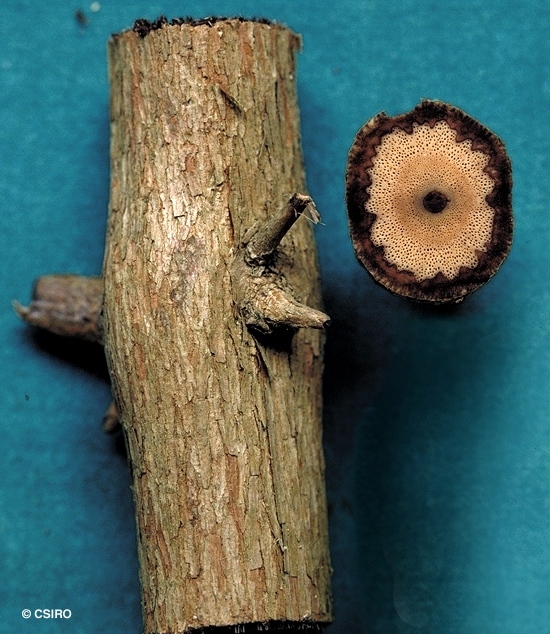Australian Tropical Rainforest Plants - Online edition
Quisqualis indica L.




Linnaeus, C. von (1762) Species Plantarum ed. 2, 1 : 556. Type: Habitat in India.
Creeper, Rangoon; Drunken Sailor; Rangoon Creeper
Vine stem diameters to 3 cm recorded. Bark finely flaky.
Leaf blades about 4-11 x 2-5 cm, petioles about 0.4-1.5 cm long. Both the upper and lower leaf blade surfaces with hairs along the midrib and lateral veins. Stems, petioles and buds clothed in hairs. Oil dots numerous. Twigs may sometimes be armed with spines about 10-12 mm long and borne opposite one another. Lateral veins about 5-9 on each side of the midrib.
Flowers about 2.5-3 cm diam. Calyx tube (hypanthium) about 6.5-7 cm long, inner surface deep red, outer surface much paler. Staminal filaments about 3.5-4 mm long, anthers about 1 mm long. Style attached to the hypanthium for most of its length, free style about 10 mm long. Ovary 5 or 6 ribbed, ovules pendulous.
Fruits about 3.5 x 1.3 cm, longitudinally 5-winged or ribbed. Seeds about 1.8 x 0.9 cm.
Cataphylls clothed in hairs, usually 3 or 4 cataphylls produced before the first true leaves. First leaves ovate to elliptic, apex acute, base cordate. Upper and lower leaf blade surfaces clothed in hairs. Midrib raised in a depression on the upper surface of the leaf blade, lateral veins depressed on the upper surface of the leaf blade.
An introduced species originally from Africa and Asia now 'naturalised' in WA, NT, CYP, NEQ and CEQ. Altitudinal range in NEQ from near sea level to 750 m. Usually found at old settlement sites where it tends to persist by means of root suckers. However, collections of fruit in NEQ indicate that it is truly naturalised. Grows in regrowth forests and disturbed areas in monsoon forest, lowland and upland rain forest.
Although this species is not regarded as naturalised in North Queensland (Pedley (1990)), recent collections of fruits suggest that the process of naturalization is occurring as appears to be the case in the Northern Territory. Byrnes (1977)





